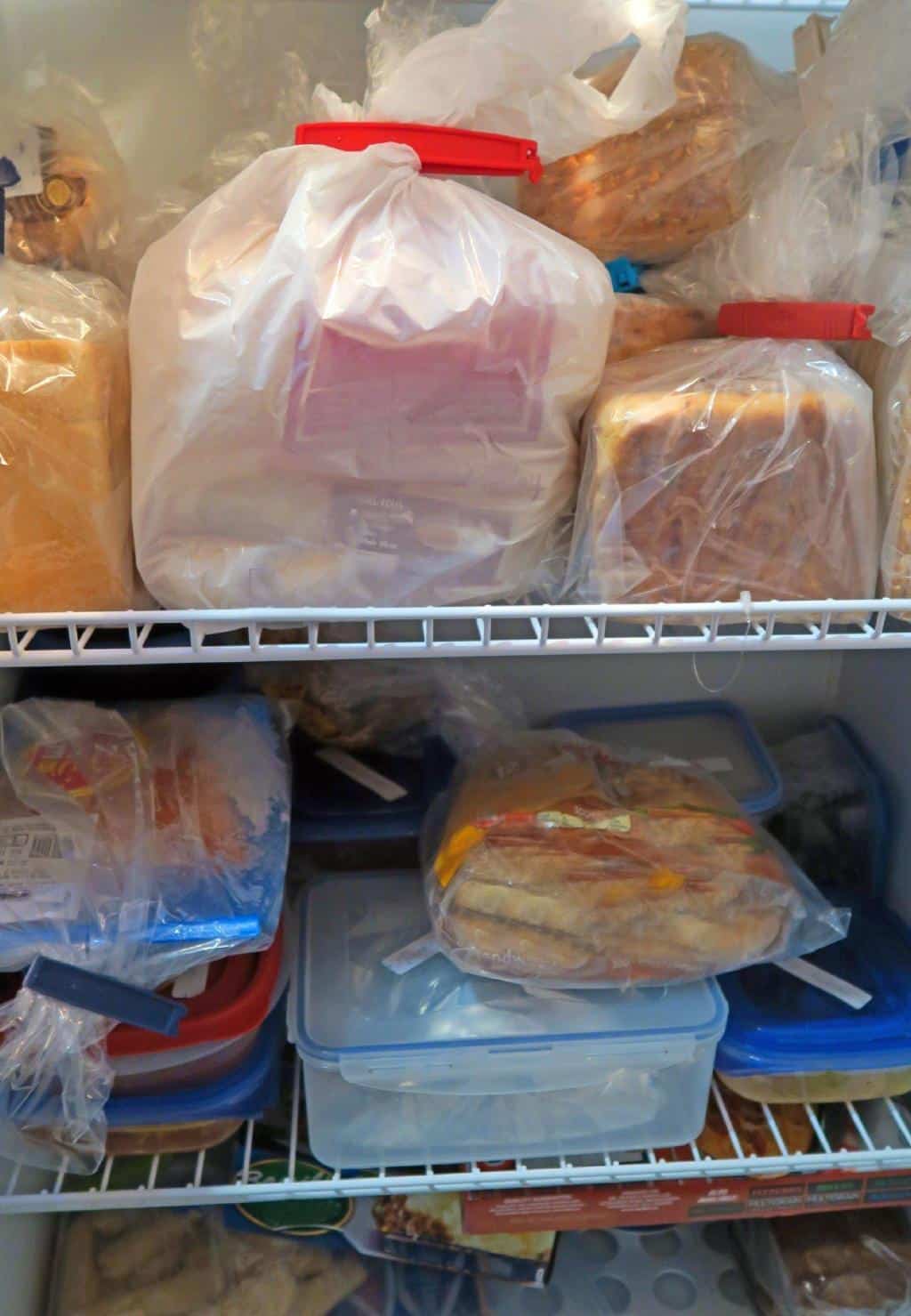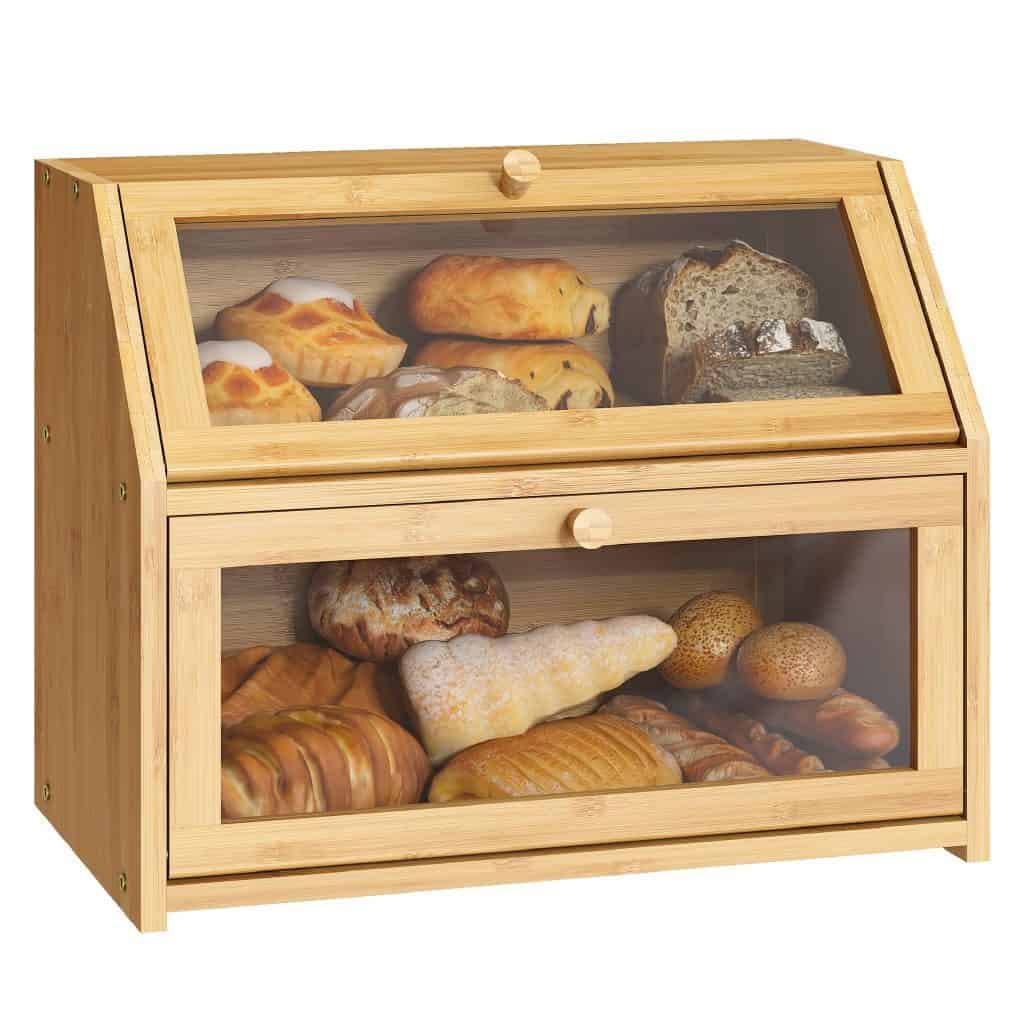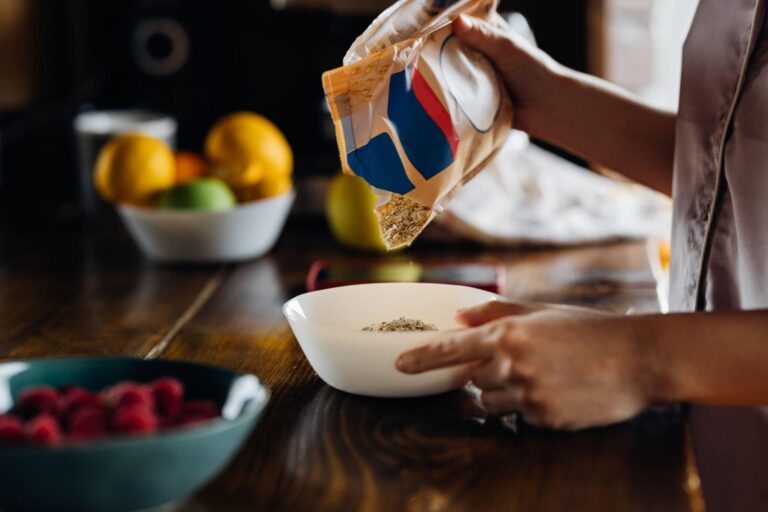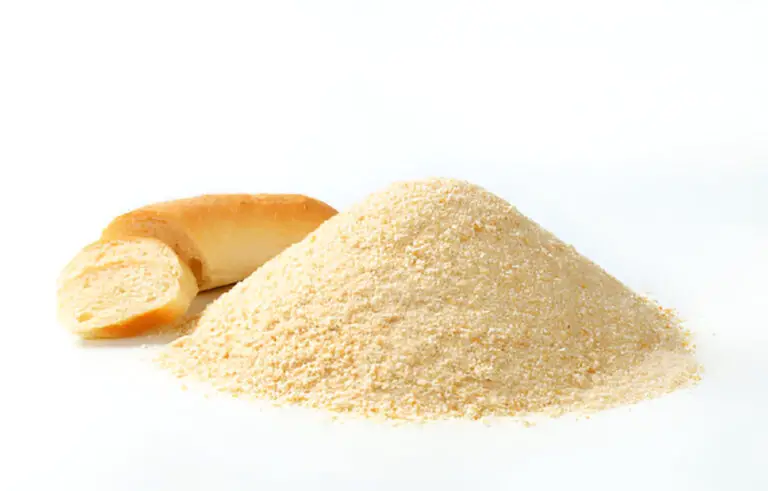Does Bread Last Longer in the Fridge or in a Bread Box? Storage Pros and Cons

We’ve all been there: You buy a fresh loaf of bread, enjoy a slice or two, and then wonder what the best way is to store it. Should you put it in the fridge or leave it out on the counter in a bread box? It’s a common question, and there’s a lot of conflicting information out there.
While some people swear by storing bread in the fridge to keep it fresh, others insist that a bread box is the way to go. So, what’s the truth? Does bread last longer in the fridge or in a bread box? The answer might surprise you.
Bread should be stored at room temperature, and a bread box can help maintain the proper moisture balance to keep bread fresh for a few days. Bread should not be stored in the refrigerator because it will dry out and become stale faster.
In this article, we’ll take a deep dive into the world of bread storage and explore the pros and cons of both fridge and bread box storage methods. We’ll also offer some tips and tricks for keeping your bread fresh for as long as possible.
So, whether you’re a bread lover looking to keep your loaves fresher for longer, or just someone curious about the best way to store bread, keep reading to find out more.
The Science Behind Bread Storage
Before we delve into the specifics of bread storage, it’s essential to understand the science behind it. Bread is made up of four ingredients: flour, water, yeast, and salt. These ingredients work together to create a dough that rises and is then baked into bread. However, bread is also susceptible to staling, which is when the moisture in the bread evaporates, leaving it dry and hard.
When bread is stored in the fridge, it’s exposed to cold temperatures, which can speed up staleness. The cold temperature causes the moisture in the bread to migrate to the crust, making it hard and stale.
However, when bread is stored in a bread box, it’s exposed to room temperature, which can cause mold growth. Mold thrives in warm, moist environments, making bread boxes a breeding ground for mold if not cleaned regularly.
The Pros and Cons of Storing Bread in the Fridge
Storing bread in the fridge is a common practice, especially for those who like to buy bread in bulk. Here are some pros and cons of storing bread in the fridge:
Pros
- Slows down mold growth: Bread stored in the fridge is less likely to develop mold than bread stored at room temperature. The cold temperature inhibits the growth of mold and bacteria, extending the life of the bread.
- Keeps bread fresh: If you’re not planning on eating your bread right away, storing it in the fridge can help keep it fresh for longer.
- Ideal for hot climates: If you live in a hot and humid climate, storing bread in the fridge can help prevent mold growth and keep your bread fresh.
Cons
- Speeds up staling: As mentioned earlier, storing bread in the fridge can speed up staling. The cold temperature causes the moisture in the bread to migrate to the crust, making it hard and stale.
- Changes the texture: When bread is stored in the fridge, it can become dry and rubbery, especially if it’s not wrapped properly. This can change the texture of the bread and make it less enjoyable to eat.
- Takes up space: Bread takes up a lot of space in the fridge, which can be an issue if you have limited space.
The Pros and Cons of Storing Bread in a Bread Box

Storing bread in a bread box is a traditional method that has been used for centuries. Here are some pros and cons of storing bread in a bread box:
Pros
- Maintains texture: When bread is stored in a bread box, it’s exposed to room temperature, which helps maintain its texture and flavor. Bread stored in a bread box is less likely to become dry and rubbery.
- Reduces waste: Storing bread in a bread box can help reduce food waste. Bread that’s gone stale can be used for croutons, bread pudding, or French toast.
- Saves space: Bread boxes are designed to take up minimal space in the kitchen, making them ideal for those with limited storage space.
Cons
- Promotes mold growth: Bread boxes can promote mold growth if they’re not cleaned regularly. Mold thrives in warm, moist environments, making bread boxes a breeding ground for mold.
- Shorter shelf life: Bread stored in a bread box has a shorter shelf life than bread stored in the fridge. This is because the warm, moist environment of a bread box provides an ideal breeding ground for mold and bacteria.
Does Bread Last Longer in the Fridge or in a Bread Box?
The question of whether bread lasts longer in the fridge or in a bread box is a common one, and the answer isn’t straightforward. It depends on several factors, including the type of bread, the climate, and personal preferences.
When it comes to storing bread, the fridge and bread box offer two different environments. The fridge provides a cold and dry environment, which can slow down mold growth but speed up staling. The bread box, on the other hand, offers a warm and moist environment, which can maintain texture and reduce waste but promote mold growth.
Bread is best stored at room temperature, and a bread box can help maintain the right balance of moisture to keep bread fresh for a few days. Storing bread in the fridge is not recommended, as it can cause the bread to dry out and become stale faster.
Freezing bread is the best way to preserve it for the longest possible time. It is important to wrap the bread tightly in a freezer bag to prevent freezer burn. If stored properly, bread should stay fresh for about 3-5 days at room temperature
Storing bread in the fridge can be a good option if you live in a hot and humid climate, where mold can grow quickly. In such climates, bread stored in a bread box can quickly become moldy, rendering it inedible. Additionally, storing bread in the fridge can also slow down staling, keeping it fresh for longer.
However, storing bread in the fridge can also have its downsides. The cold and dry environment can cause the bread to lose its texture and flavor, making it less enjoyable to eat. Additionally, storing bread in the fridge can also cause it to become stale faster than if it were stored at room temperature. The reason for this is that the cold temperature causes the moisture in the bread to evaporate faster, leaving it dry and hard.
Tips for Extending the Life of Bread
Whether you decide to store your bread in the fridge or a bread box, there are some tips you can follow to extend its life:
- Store bread in an airtight container or bag: This helps prevent moisture from escaping, which can cause the bread to become stale.
- Freeze bread: If you’re not going to eat your bread right away, consider freezing it. Bread can last for up to six months in the freezer.
- Keep bread away from direct sunlight: Direct sunlight can cause the bread to become dry and hard.
- Don’t slice bread until you’re ready to eat it: Sliced bread has more surface area, which can cause it to go stale faster.
- Clean your bread box regularly: If you decide to store your bread in a bread box, be sure to clean it regularly to prevent mold growth.
Key Takeaways
In conclusion, whether you should store your bread in the fridge or a bread box depends on your personal preference and the climate you live in. If you live in a hot and humid climate, storing your bread in the fridge can help prevent mold growth. However, if you prefer your bread to maintain its texture and flavor, storing it in a bread box may be the better option.
Ultimately, the key to extending the life of your bread is to store it properly and follow the tips mentioned above. By doing so, you can ensure that your bread stays fresh and delicious for as long as possible.
- Bread is susceptible to staling, which is when the moisture in the bread evaporates, leaving it dry and hard.
- Storing bread in the fridge can slow down mold growth but speed up staling.
- Storing bread in a bread box can maintain texture and reduce waste but promote mold growth.
- Tips for extending the life of bread include storing it in an airtight container or bag, freezing it, keeping it away from direct sunlight, not slicing it until you’re ready to eat it, and cleaning your bread box regularly.
- Proper storage and following the tips mentioned can ensure that your bread stays fresh and delicious for as long as possible.






